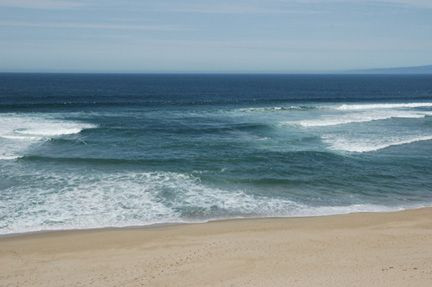Hurricane Jose Creating East Coast Rip Currents: Avoid Deadly Tide

Hurricane Jose is making its way up the east coast of the United States and as it does, it’s bringing some strong winds and waves and even creating some rip currents. From Delaware to eastern Connecticut, there was a tropical storm watch in effect as of Monday evening.
The National Weather Service out of New York City had issued a “coastal hazard message” Monday evening that warned of “dangerous surf” and possible flooding. It also noted that there would be a high rip current risk through midweek, and that there was a high rip current risk in effect until 8 p.m. EDT Monday. All of this applied to locations along the southern bays and Atlantic Ocean beaches of New York City.

A bit further down the coast, the Philadelphia, Pennsylvania, forecast office was warning of similar risks. The high surf advisory released early Monday morning said it was a message for Pennsylvania, New Jersey, Delaware and Maryland. That advisory warned of high surf and coastal flooding as well as increased wave height.
Over the weekend the rip currents were already threatening the lives of swimmers off the Jersey Shore. Two swimmers were pulled out into the water in what seemed like just seconds they told CBS New York. Luckily there were lifeguards on duty who were able to conduct a proper rescue to get the two back to shore safely.
This might not be case for the coming week though. Many cities and towns only staff beaches with on duty lifeguards through Labor Day. After that guards are only on duty during the weekend if at all, meaning if someone gets pulled out due to Jose this week, there might not be someone there to pull them back in.
What is a rip current?
Rip currents, sometimes called rip tides, are a specific area of shore where water flows away from the land and into the water. The generally start close to the shore and then extend out to surf zones where waves aren’t breaking. The can range in width, some are very thin while others can take up a wider area of water, according to the National Oceanic and Atmospheric Administration.
These currents can also run fast or slow. They’re essentially an escape route for extra water that gets stuck close to the shore where it’s breaking in wave form. They can form at any beach where there are breaking waves.
How to survive a rip current:
The first thing to do if you find yourself in a rip current is pretty much nothing. NOAA says not to try to fight the current and instead float and relax instead of expelling excess energy. Float or swim along the shoreline until you can get out of the current, once you’re out of the current swim diagonally away from the current toward the shore.

© Copyright IBTimes 2024. All rights reserved.





















